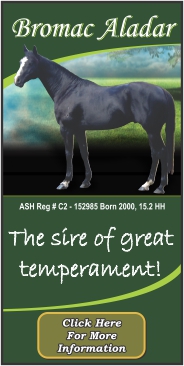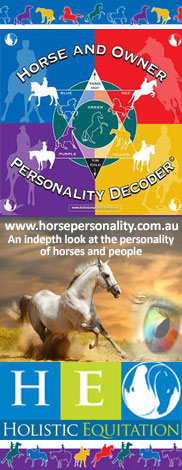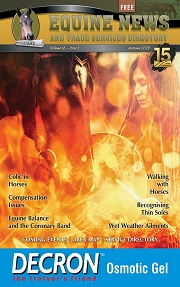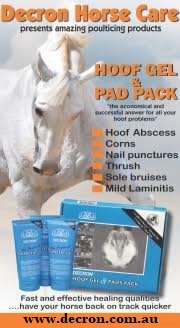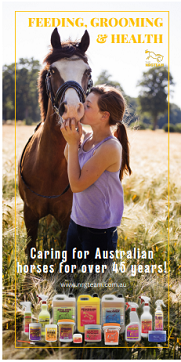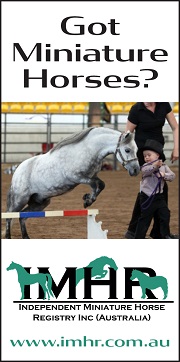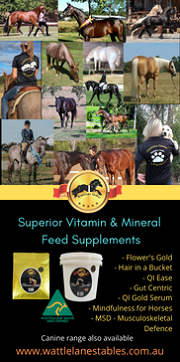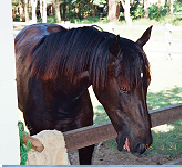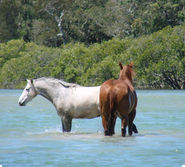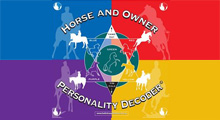Dr Doug Wilson conducts research into the immunology of horses, with a special interest in Insect Bite Hypersensitivity (better known in this region as Queensland Itch).
Queensland Itch is usually an allergic reaction of horses to the bites of midges and to their saliva in particular. For owners, it can be a nightmare, with affected horses driven mad by the itch and often rubbing their skin raw in an effort to find some relief.
Midges, which occur in almost every country where horses are kept, are only a couple of millimetres in length. As with many insects that feed on blood, only the females bite, as they need the high protein meal to enable them to lay their eggs. Over the course of a single evening, a horse may be bitten by hundreds or even thousands of midges, each one injecting a small amount of saliva containing foreign proteins into the skin.
Although the disease has been known for centuries, the first scientific description of the link with midge bites was made in the 1950s by an Australian vet called Riek. As well as noticing that the disease only occurred in areas where midges were abundant, he showed that injecting an extract of midges into the skin of affected horses would cause a small swelling within minutes.
Midges are most active around dawn and dusk or on overcast days when there is less risk of being dried out in the hot sun. After alighting on the horse, they crawl down the hair shafts to the skin surface. Unlike their larger cousins the mosquitoes, their mouthparts are too short to probe for a blood vessel, so they have to chew their way through the tough outer layers of skin. To assist their efforts, they secrete saliva. This contains a mixture of enzymes to digest and soften the skin tissue, as well as ‘vasodilators’, which encourage extra blood flow to the site. There are also several factors that prevent blood clotting. A small pool of blood then forms just under the skin’s surface, which the midges then suck up.
Once full, they make their way back to the ends of the hairs from where, laden with blood and weighing twice as much as when they arrived, they launch themselves into the air. The whole process takes about 15-20 minutes.
Why does the horse react to the spit? When an animal is injected with something foreign, its immune system responds by making antibodies that can bind on to the foreign proteins.
Antibodies are made by specialised cells called B-cells, each of which is programmed to make a unique antibody. As soon as an individual B-cell encounters a foreign substance, its antibody is stimulated to rapidly grow and divide, producing more antibodies that can bind to the invaders. This is exactly how a flu vaccine works: a small amount of the virus is injected so that the B-cells produce antibodies, which are then primed to fight and neutralise the real flu virus when it arrives.
The first stage of our research at the University of Bristol was to identify the specific midge proteins that are targeted by the horses’ antibodies. Our approach involved slicing midges into very thin sections that were placed on glass slides. The slides were then exposed to serum from horses, so that any antibodies in the serum would bind to their target. We then detected the activated horse antibody by using a label that produces a red colour.
So why do only some horses in countries with midges develop the Itch? The answer rests in allergies. These occur when the immune system makes a mistake and mounts a response to the wrong thing. For example, in people this could be an extreme reaction to peanuts or pollen. But in horses, the commonest allergy trigger is midge saliva, with the immune system mounting an anti-parasite response out of proportion to the invader.
The kind of antibody that is important in allergies is called Immunoglobulin E – or IgE for short. Its normal role is to defend against parasites like worms, some of which live just under the skin, as well as in the gut. To help protect against worms, the immune system has to use one of its most powerful weapons, the mast cell. Mast cells coat themselves in IgE antibodies and lie in wait just under the skin or in the lining of the intestine. When the IgE binds on to its target, the mast cell releases a cocktail of chemicals that cause a severe inflammatory reaction, while attracting other immune cells which can injure or kill the parasite.
When we looked for IgE antibodies that bind to midge saliva glands we only found them in the serum taken from horses with the Itch. It appears that Queensland Itch is a case of mistaken identity, with the proteins and agents in the midge saliva being wrongly interpreted as an invading parasite, such as a worm.
Can we reprogramme the immune system of horses with Queensland Itch to be like that of healthy horses? Our next task in the research was to identify all the different proteins in midge saliva to identify the most common. We also isolated the switched-on genes in the glands that code for the saliva proteins, to identify those most likely to be responsible for the Itch reaction. We will be going on to produce litres of protein culture, so that we can attempt to re-programme the immune system of an allergic horse to act like that of an unaffected horse.
We don’t yet know if we will be successful – it has taken almost ten years to get this far, but we are making progress. In research, there are always new surprises that await, but one thing is certain in science – it always takes longer that you think. Yet if everyone works together, one day we will indeed be able to do something about Queensland Itch and develop an effective cure.
Dr Doug Wilson is a Lecturer in Virology at the University of Bristol School of Veterinary Sciences. His main area of research, funded by a research grant from the Horse Trust, is the immunology of horses with a special interest in the immunopathology of Insect Bite Hypersensitivity (Sweet Itch / Queensland Itch). For more information, contact Dr Doug Wilson on Doug.Wilson@bristol.ac.uk










